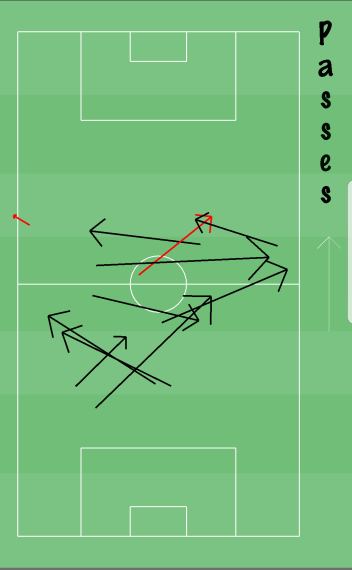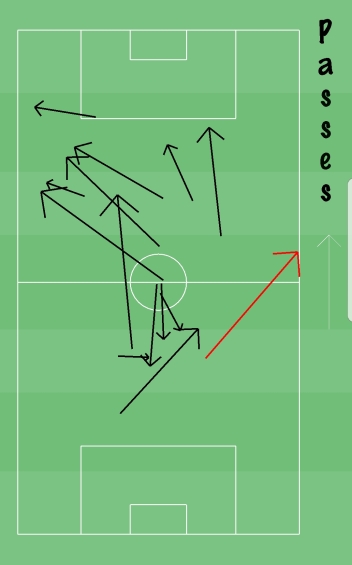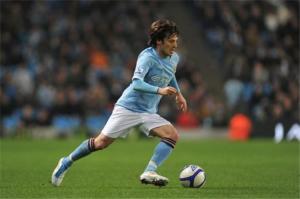So, the new Academy football season is about to get underway with the games programme kicking off this Sunday.
I look forward to the routine of the regular season settling down and, once this Sunday’s out of the way, being able to make all the games, after family commitments, stag do’s and weddings have meant a very stop-start pre-season period for me with my new age-group.
I’m excited to continue to build relationships and trust with the players in the age group, and I’m as determined as ever to help ensure the group of players I’ll be working with have the best opportunity to both develop themselves as players AND enjoy the game.
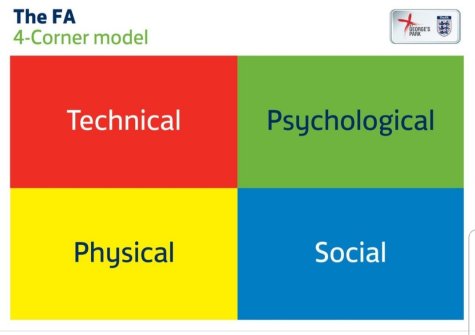
The FA’s now long-established 4-corner model of considerations for player development will be well-known to most. Technical/tactical, Physical, Psychological and Social aspects all need attention at varying levels and detail at different times. There seems to have been a big sway in the last couple of years towards recognising the importance of the psychological corner and the attention that this area should command. I fully support this and it’s an area I try to pay great attention to. The way I see it, the mind controls everything the body does, so why wouldn’t we have at least as much focus and attention to detail on psychological factors as we do technical or tactical aspects?
In essence, train the mind and be aware of how it works for each individual, because it’s their mind that controls everything they’ll do on a football pitch. I try to pay attention to the language I use and specific ways I word questions, explanations or challenges, with consideration for the potential impact it could have for a young player – or should I say, a young person.
But it’s worth thinking for a moment about the Coach too, isn’t it. If the 4 corner model was being used to evaluate the development of the coach and to consider things that may affect the development or performance of the Coach, what would that look like?
In reality, most Coaches probably leave their personal life outside in the car park before a session and focus on the job in hand. But that doesn’t necessarily mean it isn’t still impacting on the Coach, just as a young players performance in a session or game could be affected (negatively or positively) by psychological factors from outside of football.
At the start of this 2019-20 season, my life has changed massively from this time last year. Last season, I suffered the loss of my Mum in September, and towards the end of the season my marriage came to an end.
My Mum was only 56 and it was an unexpected and fairly sudden thing, just a month after learning of her condition.
I think I only missed one training session around that time, and just got on with it. I’d say I’m of quite strong character, but that doesn’t mean things as massive as that don’t affect me. I’m a calm, laid-back guy and probably don’t give much away in terms of emotion in everyday life, let alone coaching. But it’s there underneath the surface. Did I perceive it to affect my coaching at the time? Honestly, no I didn’t. But maybe others’ perception might’ve been different, I don’t know. It wasn’t something I told anyone, other than the Academy staff. And I’ll always remember the immediate support and thoughtful gift from my close colleagues in the Foundation Phase of the Academy.
At the time my Mum passed, I was about a third of the way into my 12-week UEFA B Licence project. And as anyone who has completed the B-Licence will know, this project is a lot of work. The “12-week” part of it I’m talking about is a period of 12 weeks where you have to document, in detail, all the planning, delivery and reviewing/reflections of 12 weeks of training sessions and matches. This on it’s own was a mass bit of work, and of course that was only part of the whole project.
Anyway, I’d already delayed starting this 12-weeks till the 17/18 season started because I didn’t want to start it in the previous season and end up resuming it with a different set of players after I got a different age group for 18/19. So as I’d already started this log of sessions and games, and done it in such detail as I did all the way through, I didn’t want to have to have a break and then need to start it all over again a few weeks later. So on I went.
It was a really busy season. Coaching 3 evening sessions a week as opposed to the 2 sessions a week I’d had in the previous season. And then the games on Sundays. And on top of that, all the PMA work that comes with reviewing the sessions and games, the 12-weekly reviews for the players, assessment meetings and all the general communications (texts and emails) that at times feel like they’re forever incoming and outgoing.
Fitting all that in, as well as all the UEFA B project work that took months to complete, was difficult at times with a toddler at home and obviously a full-time job. Parents of the players in my age group last season will have got used to receiving emails very late at night, because that was usually when I could squeeze it in on top of everything else.
And in early March, my marriage came to an end as my wife and I decided to separate. This wasn’t a toxic event or a soap-opera style dramatic fall out or anything like that, but it was another pretty major thing going on. Especially with my (now) 2 year old daughter involved in this situation too.
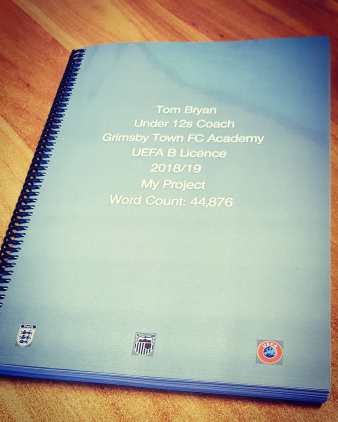
Towards the end of the season I finally got all my work done for the UEFA B Licence project, as well as the PowerPoint presentation. A 44,000+ word project, with a presentation to summarise it. It was the best piece of work I’ve done on anything in my life, and in the “Introduction” I dedicated it to my Mum.
By the end of the season I felt exhausted. It was the first time I’d been ready for a break from Coaching since I started in 2012. I was looking forward to it. Being a part-time Academy Coach can feel like much more than just a second, part-time job. It’s more than just a few hours a week on the training pitch. I’d had a lot going on outside of football, and the age group I had last season wasn’t without it’s problems either, so it wasn’t always as straight-forward as just concentrating on the coaching.
Having a couple of months off from Coaching after the season finished was a breath of fresh air that came at the right time for me. Not so much the Coaching, but everything else that comes with it. The PMA reporting, the constant texts and emails. If I’m honest, I wandered if I’d come back for pre-season excited to be back or not. I’ve had an awesome summer, used the extra free time really well and made some great memories. I missed the first week of pre-season as I was away in Slovenia on a mate’s stag do, so I came back the following week, batteries recharged, still not really knowing how I’d react to being back.
I enjoyed the first week back, enjoyed meeting the new group of players I’d be working with for the season ahead and was excited by the quality and application of the players in my first 2 sessions back. I’ve loved pre-season, although I’ve missed various training sessions due to being away, and most of the games due to either being away or having my little girl. But I can’t wait for the season ahead.
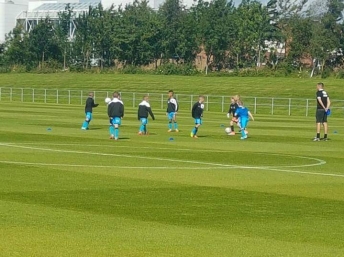
So, what’s the point of this post? I’m not 100% sure.
It’s not a cry for sympathy – I choose to do this. It’s not a declaration that I have any issues with mental health – I haven’t, and I’m in an especially great place now. And it’s not a criticism of Academy football, anyone at my Club or the players I’ve worked with.
Take it just as something to make people think. To remember that Academy Coaches, particularly the part-time Coaches who do it as a second job, are there throughout the year putting on their Coaching “mask” as they head to the training pitch to do their very best to help to holistically develop a group of kids with different needs, when there could be all sorts of unknowns going on in their own “psychological corner.”
For the Coaches, remember to recharge your own batteries. Have time away from it if you need to. And look after yourself above all else. There’s a big Coaching community out there that could probably relate.
It’s more than just a part-time job.
There’s a person under the metaphorical mask that the Coach puts on for work.
And there’s more to the person than most people will probably know.
Good luck for the 2019/20 season everyone!
